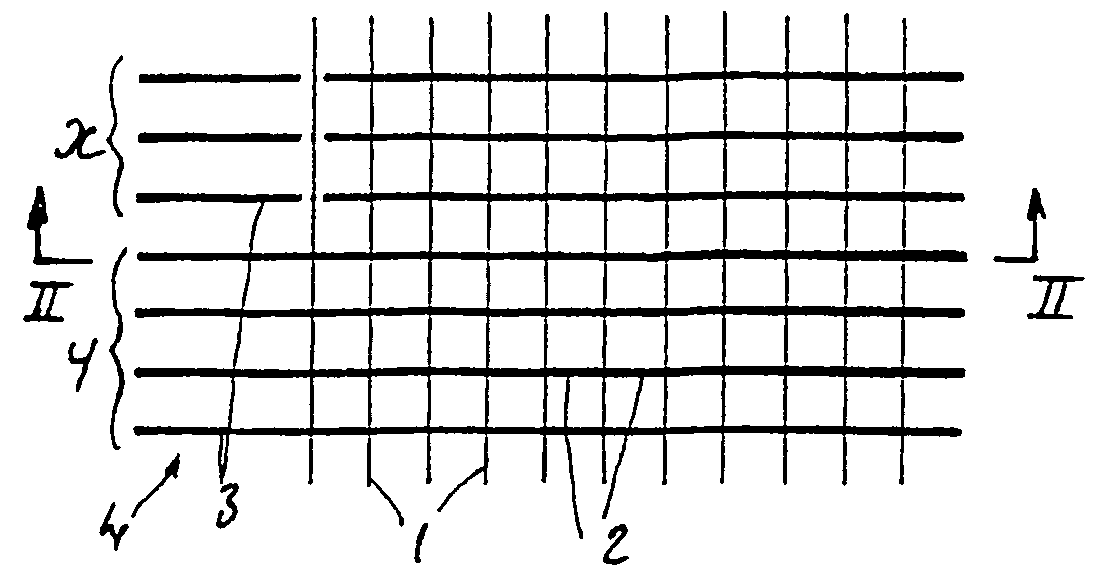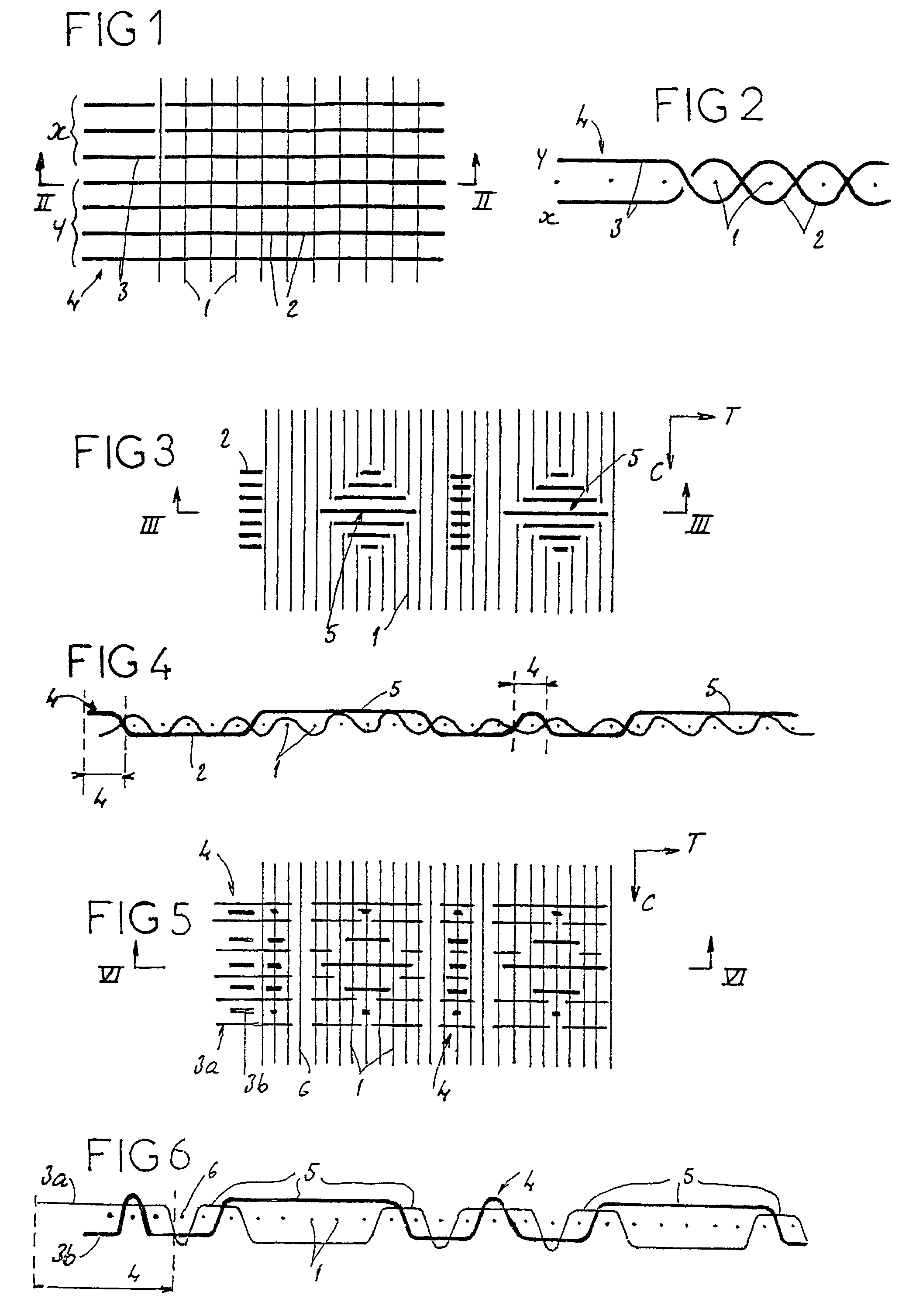Method for producing an optical-fibre based fabric
a technology of optical fibres and fabric, applied in the direction of weaving, jacquards, applications, etc., can solve the problems of unsuitability of simple weaving, and achieve the effect of facilitating the connection of light sources
- Summary
- Abstract
- Description
- Claims
- Application Information
AI Technical Summary
Benefits of technology
Problems solved by technology
Method used
Image
Examples
Embodiment Construction
[0056]Where necessary in the above figures, the different types of warp or weft optical fibres have been represented by lines of different thickness.
[0057]In addition, in the various figures of the drawing in support of the following description, the different warp and weft threads have been deliberately shown spaced from one another so that their paths in relation to one another can be more easily understood.
[0058]Similarly in certain figures the warp and weft threads made of textile (cotton, silk or other) other than optical fibre have deliberately been removed for greater clarity.
[0059]It will be understood that in practice these threads are part of the weaving and the different adjacent threads, whether textile or optical fibre, constituting the warp and weft of the finished fabric are in fact in contact with one another.
[0060]The weaving method of the invention is a Jacquard weaving method that is well known to the persons skilled in the art and will not therefore be described ...
PUM
| Property | Measurement | Unit |
|---|---|---|
| Color | aaaaa | aaaaa |
| Distance | aaaaa | aaaaa |
Abstract
Description
Claims
Application Information
 Login to View More
Login to View More - R&D
- Intellectual Property
- Life Sciences
- Materials
- Tech Scout
- Unparalleled Data Quality
- Higher Quality Content
- 60% Fewer Hallucinations
Browse by: Latest US Patents, China's latest patents, Technical Efficacy Thesaurus, Application Domain, Technology Topic, Popular Technical Reports.
© 2025 PatSnap. All rights reserved.Legal|Privacy policy|Modern Slavery Act Transparency Statement|Sitemap|About US| Contact US: help@patsnap.com



